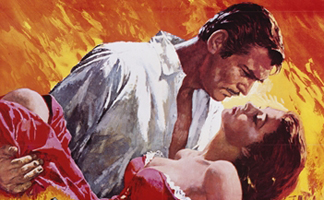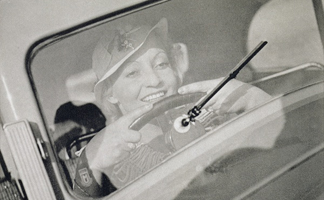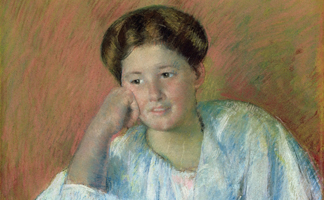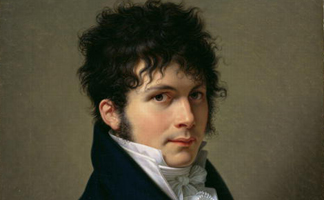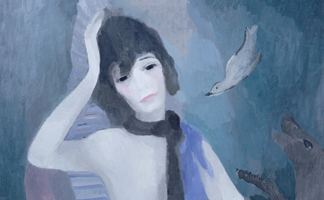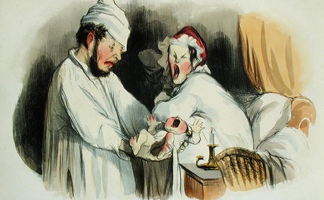Published 10/03/2010
We have Rhett Butler. After sending a manuscript of her romantic novel to an editor, a crisis of confidence caused Margaret Mitchell to call the editor and ask that he not read it after all. She was too late, and the editor had fallen in love with her story. Gone With The Wind became one of the most popular books of all time, selling more than 30 million copies, it won Mitchell a Pulitzer Prize in 1937, and was adapted into an Academy Award-winning film. Rhett, a gambler and speculator, delivers the best line of all times to Scarlett, a strong-willed, stubborn woman after she admits that she is finally ready to reciprocate his love. Before he turns to leave he says, "frankly my dear, I don't give a damn." |
|
We can enjoy one of life's simple pleasures, a warm chocolate-chip cookie (or two, or ten) straight from the oven. As owner of the Toll House Inn, Ruth Wakefield was baking a batch of her famous chocolate cookies when she realized that she was out of baker's chocolate. In a pinch, she substituted broken pieces of a Nestle's semi-sweet chocolate bar. When she pulled the cookies out of the oven she was surprised to find that the chocolate didn't completely melt like her usual recipe. What she ended up with instead was a cookie that became so popular that Andrew Nestle struck a deal with Ruth If Nestle could print the recipe on their packaging, in exchange she would get a lifetime supply of chocolate. |
|
We're friends with a 6-ft yellow canary and a green garbage can-dwelling grouch. Disappointed with the state of children's television, Joan Ganz Cooney created a program called Sesame Street whic combined fun and learning in the same package. The show premiered on PBS on November 10, 1969 and has been teaching kids everything from empathy to the ABCs for over forty years. Whether you identify with the obsessive Count, the jokester Ernie or the anal-retentive Bert, everyone sees a bit of themselves in each of the characters. Watching Sesame Street is one thing that kids of this generation have in common with their parents. |
|
We have the ability to drive in inclement weather without sticking our head out the window like a dog to see. On a trip to New York City, Mary Anderson noticed that the streetcar drivers had to open the windows when it rained in order to see properly. As a solution she invented a swinging arm device with a rubber blade that was operated by the driver via a lever in the vehicle. Her invention was complete in 1903, she had a patent by 1905 and by 1916 all American cars came with windshield wipers as standard equipment. |
|
The Metropolitan Museum of Art got a little more fabulous. As a little girl, Louisine Havemeyer (nee Elder) loved art so much that she saved her her money until she had $100, which she gave to her friend Mary Cassatt. Cassatt purchased the first Van Gogh to enter an American collection. During her marriage, Louisine amassed an amazing collection of pictures from artists such as Veronese, Rubens, Rembrandt, Goya, El Greco, Ingres, Pouisson, Corot, Manet, Monet, Renoir, Pissarro and Degas. In 1929, after she and her husband passed, the collection was bequeathed to the Met on the condition that it be kept intact. |
|
We can dream of one day seeing this amazingly beautiful elegy in marble with our own eyes. Taking over 22 years to construct, the Taj Mahal was completed in 1648. Mughal Emporer Shah Jahan built it in memory of his wife, Mumtaz Mahal, as a mausoleum. Considered to be the finest example of Mughal architecture (a style that combines Persian, Indian and Islamic architectural elements), the central dome rises to a height of 213 feet. The architectural design uses the interlocking arabesque concept, and the inside and outside surfaces are decorated with inlaid designs of flowers, scroll work and calligraphy.
|
|
We can be entertained and simultaneously irritated by some of the most memorable heroines in literature. Well that and....Mr. Darcy. Jane Austen was the first author to write about the comedies and manners of middle-class folks in 19th century England. Although very humorous, Austen's novels are also full of biting social commentary about the dependence of women on marriage to secure social and economic security. Whether you love them or hate them, or a bit of both, Fanny Price, Emma Woodhouse and Elizabeth Bennet are enduring characters, and Mr. Darcy, well....need we say more? |
|
We have permission to don sweatpants once in awhile as long as we agree to put on the little black dress when necessary. Thanks to Coco Chanel, women of the 1920s were able to throw away their corsets and petticoats in exchange for comfortable, menswear inspired fashions. Famously saying, "luxury must be comfortable, otherwise it is not luxury," Coco Chanel was the first designer to use jersey fabric. In addition to sparking this clothing revolution, Chanel is the designer every woman can thank for creating the little black dress. |
|
And finally... Because of women, we exist! We're stating the obvious, we know, but this month give a little nod of appreciation to the women in your life.
|
|

